
New Orleans is a city that harbors a great deal of talent. When most people think of New Orleans, they think of the music scene, particularly Jazz groups and Brass bands. While it is true that our great city harbors much musical talent, it is also bursting at the seams with creative talent of all sorts. New Orleans is chaos and order colliding. It is a melting pot of cultures in a way that few other cities are. It stands to reason that out of a city that is poetry, great poetic talent arises. In a field historically, unjustly dominated by men, it is important to shine a light on the talented women who are breaking out onto the poetry scene. What follows is a highlight of five rising women poets in New Orleans: Kellyann Bates, Julia Taylor, Sharita Simms, Molly Kirschner and Camille Goering share their thoughts, works and lives in the profiles below.
All of these poets have been previously featured in Big Easy Magazine’s art section! Each Wednesday we feature a local poet’s work! Be sure to check back on Wednesday’s for new and exciting work from these five, as well as other local talents!
Kellyann Bates
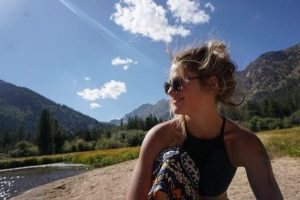
Nolan: Who are you? How would you describe yourself to someone coming across your work for the first time?
Kellyann: I am a Louisianan and I’ve been creating in multiple art forms through the past ten years. I like to describe my styles of art as flow art. Anything that has rhythm, movement or well… flow is something I’m attracted conceptually for most of my art.
Nolan: When did you first start writing poetry and what’s your goal in doing so?
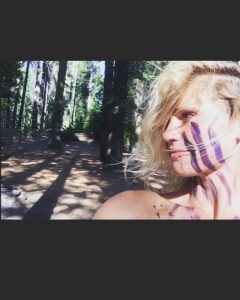 Kellyann: I’ve kept a journal since as long back as I can remember. Even had one that opened to a secret password.. oh early 2000 technology at its finest. I often wrote poems along with daily logs, most of them were about my dog as a kid, my love for dogs hasn’t changed. Luckily for me, the poetry did!
Kellyann: I’ve kept a journal since as long back as I can remember. Even had one that opened to a secret password.. oh early 2000 technology at its finest. I often wrote poems along with daily logs, most of them were about my dog as a kid, my love for dogs hasn’t changed. Luckily for me, the poetry did!
Nolan: What is your connection to New Orleans? What does it mean to you and how does living here effect your poetry?
Kellyann: New Orleans is obviously an incredible place but I’m fascinated by its complex social structures and the web of true community that residents instill. Connecting with new people every day in a city I’ve lived in for years while still getting to enjoy a family I’ve made here provides inspiration through social and energetic flow.
Nolan: What unique challenges or circumstances have you faced being a woman in a field that has been historically (unjustly) dominated by men? How have you overcome these hurdles and how does this come through in your work?
Kellyann: Honestly, I feel heard by my community and I’m incredibly grateful for it. Pretty much everything ever has been dominated by men. All we can do now is break the misogynistic cycle and encourage and celebrate artists based on the work, regardless of gender. I’m incredibly lucky to live in a place that is doing that in a lot of personal ways and I only have hope for the future!
Nolan: What are your goals with both your poetry and your live overall moving forward?
Kellyann: As always to stay grateful, mindful and keep growing!
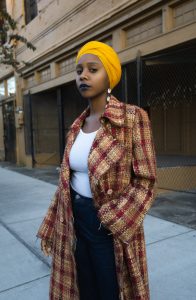
Of my Own Throne
“There’s nothing
you can take from me
that I didn’t give
So gather your ego
then let me live,
and even if you don’t,
I’ll be me still
Accept that my life
is not here
for your consumption
or your pleasure,
your entertainment
or your treasure
I am gold of my own
I am
on my own throne”
………..
Nolan: Who are you? How would you describe yourself to someone coming across your work for the first time?
Sharita: I am a gypsy, a spirit scribe, and a revolutionary devoted to building a Utopia of kinship. My expressive skill of writing is greatly motivated by the spirit that moves through me to convey divine messages of introspective consciousness. More socially, I am a writer, doula, and visionary in photography and film direction.
Nolan: When did you first start writing poetry and what’s your goal in doing so?
Sharita: In retrospect, my first journal of poetry was dedicated to healing. I didn’t know that I was healing at the time yet I did know that I was in a dark and confusing place and that the only way through it seemed to flow from the pen onto the pages. I wrote this poetry in high school, at 16 years old. Seeking clarity from a fallen romantic illusion, every day after school, poetry was my savior. I disconnected from the ritual of writing poetry for some years until my sophomore year in college where I needed the same outlet of healing, yet this time, knowing more confidently that I would find refuge in my writing. Then I began my professional journey and in February 2017, releasing my first book of poetry and reflections, Vacuum Reality.
Nolan: What is your connection to New Orleans? What does it mean to you and how does living here effect your poetry?
Sharita: My lineage has been nestled in New Orleans for a very long time, both maternal and paternal. I am my family’s sunflower from the concrete, with roots in Central City I always felt the spotlight on me from my community. My elders, peers, and community kindred would always treat me in such a respected way that further lead me on the path of introspective consciousness and to be in that space and shine from it.
Living in New Orleans, where everything is magic, both dark and light, and where the people tell stories while the colors reflect them, I’ve had a journey of unique observation growing up in the ghetto with Montessori education and Baptist church influence. My experience with New Orleans has always felt that New Orleans herself chose me as one of her special children to be and share the essence of New Orleans through my eyes, mind, and words.
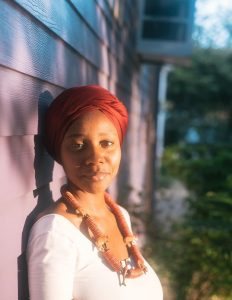 Nolan: What unique challenges or circumstances have you faced being a woman in a field that has been historically (unjustly) dominated by men? How have you overcome these hurdles and how does this come through in your work?
Nolan: What unique challenges or circumstances have you faced being a woman in a field that has been historically (unjustly) dominated by men? How have you overcome these hurdles and how does this come through in your work?
Sharita: Perhaps because I’m a newly professional artist, no challenges resonate with me in a way that felt discriminatory because I am a woman. Again, I am a gypsy. Much of my creative process is on my own back and from my own will. I don’t involve very many people into what I present to the world and how I do so.
Also, I was raised by many matriarchs. My personal experience with patriarchy is different from many women in my community. I’ve always known the women in my world to be more dominant and keeping the order so I walk in the path that was set up for me to shine not because I am a woman but especially because I am a woman.
The struggles of relationships between myself and men conveyed through my literature are due to me embarking on a path of romance that I didn’t witness growing up. The matriarchs that I speak of were more focused on getting done what needed to be done and there weren’t many men around for them to show me examples of intimacy.
Nolan: What are your goals with both your poetry and your live overall moving forward?
Sharita: My creative goals for both my written and spoken poetry are to continue inspiring introspective consciousness, fearless feeling, cultural shifting, self-healing, and to build a Utopia of kinship through literature. Professionally, I will continue publishing books, making appearances, and expanding my words and visions through cinema.
My passion for storytelling flows from poetry to history, to cinema, to music, and movement. My motivation for creating a legacy and life where this all thrives together is because I accept the magic within the being of a black, woman, wordsmith, from New Orleans.
Build with me, at thebrowngypsy.com
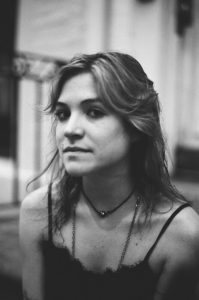
The halo thick, stretch bruised and yellow;
it crowns my mourning thin bedfellow,
Her with eyes spilt splinters on the sweat-steamed bathroom floor
The shards of iris, cast honey, cloudless
Swim straight through stripping marine roar.
Before this shelter, black hole bombing
She clocked thin hours, suspense and haunting
The alien blue space draft in which she dwelled before
As one snuffs pain, the yawning of her veins,
To bubbling, bursting volcanic sores.
To bend, to break, the crested shadows on her face
Each swell of skin clipped in wrinkled lace
All bent fingers slammed straight in the swinging door
That opens for others, her sober sisters and brothers,
Puzzle click patience to keep from wanting more.
For her I leak from needle valves within
A melting shroud on stain-seared skin
I murmur mouth full that grating lullaby’s score
For her I’ve mastered, paced disasters
I’m not like her, I’m not, I’m sure.
Though at the falling, of dusk and shutter
The hunger for thickness, spread over the clutter
Snap the limbs and stroke the core
I’d rather fear, the view from here
Than know by slow heart the pickets of the white framed door.
Camille: I can’t tell you much about who I am but I can try to describe the experience of being me. I’m the goldfish that the kid won at the carnival and took on all the rides and then felt bad for and threw to the ocean. Except I’m still in the plastic bag. I’m at the very beginning of a journey, realizing that I’m a part of something unfathomably expansive and ubiquitous, but still separated from it all by a thin layer of filmy opalescence. Call it ego or illness.
I’m still reeling pretty hard from the (largely self-generated) hurricane that was my life before I decided that peace and presence of mind, however boring, were more worth aspiring to than chaos. And the hunger hasn’t dissipated at all- the hunger for more, more of everything. So I’m navigating the world, driven by that hunger, but still feeling very much apart from it. I’m still not sure if that’s a choice or just a feature of my brain chemistry.
Nolan: When did you first start writing poetry and what’s your goal in doing so?
Camille: I’ve always existed in a state of unease and anticipation like if I could only remove my self from the limited dimension that I occupy, I could make sense of it and live a more meaningful life. Poetry is an expression of that, an attempt at existential inquiry. I grew up in an apartment building that didn’t have a thirteenth floor (superstitions are so fascinating to me- I’ve got plenty of them which really offends my rational mind) and it felt to me like it was my job to create a myth around that, to explain what had happened to the thirteenth floor. My mother and my fourth-grade teacher both had me write stories about it, and I guess that’s when I started to experience writing as an epistemological process. My theory was that the souls of people that had died in our building were kept there until someone figured out what to do with them. When my mother died, it felt like I had already written her into immortality. But I was also fourteen years old and getting drunk and reading 19th-century Russian novels so it sort of fit the persona I was trying to create for myself.
I read a book with my students called The Giver in which the characters are only able to perceive the world in monochromatic tones. There’s a scene in which the main character is gazing at an apple and the object begins to change before him, quivering with an indescribable quality that he has never seen before. What he doesn’t realize is that he’s experiencing the qualia of color. That’s sort of what poetry is to me, a ubiquitous feeling of being perpetually touched in a place you’ve never been touched before. It’s this suspicion that I have that there is something beyond my limited depth of perception, that I can feel something stirring beneath the surface of things and I want to try to describe it.
Nolan: What is your connection to New Orleans? What does it mean to you and how does living here effect your poetry?
Camille: I came to New Orleans for Mardi Gras the year after Katrina. I was a kid, and I fell in love with it, in the same violent, uncouth way that I’ve fallen in love with people. There was a gentle desperation in the hedonism, and an aftertaste of compassion in everything that people did here. It’s a pretty reductive perspective but I was an eleven year old with poetic inclinations so that kind of thinking is inevitable.
I finally moved here, to the Irish Channel, in 2017, and now I teach English and French at a high school in New Orleans East.
I’ve always felt about New Orleans the way that one feels about a person with whom one has too much in common: curious, obsessed, apprehensive. It is the only place in the world that makes me feel tangible, like there are physical counterparts to the characteristics of my personality. My poetry has always and will always be about New Orleans because it’s always about me. My ego is, unfortunately, relentless.
Nolan: What unique challenges or circumstances have you faced being a woman in a field that has been historically (unjustly) dominated by men? How have you overcome these hurdles and how dies this come through in your work?
Camille: The challenges that I’ve faced have been largely self-imposed. Most problematic, I think, is the pervasive glorification of self-destruction that has colored how we talk about male writers with mental illnesses and substance addictions. I grew up reading the words and listening to the lyrics of countless men whose descents into addiction and despair were often touted at worst a byproduct of art, at best a symptom of their brilliance. John Berryman once wondered “whether wickedness was soluble in art.” And I think, for men, it often is. And I wanted desperately to be a man for a very long time. So when I met my demons and realized that I could enlist them in the creative process, I cited the examples of John Cheever, Raymond Chandler, and Charles Bukowski to justify marinating in my misery. But it made me very sick, and very unhappy. I read a lot of biographies and did quite a bit of research. Behind the veneer of the tortured artist was the same miserable, bloody, shit-stained inertia that plagues us all. That helped to shift my perspective a bit. I’ve realized now that being broken won’t make my poetry any more whole.
Nolan: What are your goals with both your poetry and your life overall moving forward?
Camille: I’m typically not much of a goal-setter because meeting goals doesn’t really give me the feeling it’s supposed to. I want to just keep writing, and write more. I’d like to finish a book of poetic fiction in the sort of style of Anne Carson. Autobiography of Red is one of my favorite books.
I want to keep teaching, but not in the traditional sense. There is so much more power in detaching oneself from the process of teaching, in being a guide or facilitator to others’ own personal discoveries and learning experiences. That’s what I aspire to be, I guess. A companion in others’ journeys of inquiry.
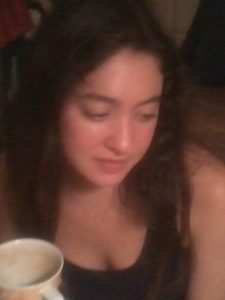
For B.
It hangs by a thread, this inchworm,
finger on a lyre.
You worry about your brain, I worry
the end of the world!
Not for the lightning bugs
free of their fire.
Not for the hermit thrush,
who goes through phases but remains rock solid.
With an inchworm in my hair, how can my head
not be a harp? How can I not be beautiful, musical?
And you, in New Orleans, when you’re out by the bayou,
trees grow down– don’t listen.
Don’t blame it for imitating you,
Molly: I am a collector. I am never seen without my notebook, in which I record the images and overheard conversations I encounter in my day. If you hang out with me, you will frequently be told, “I’m putting that in a poem (or play).” My work reflects my love of nature, the divine, and the absurd; it is equal parts imagery, metaphor, and humor.
Nolan: When did you first start writing poetry and what’s your goal in doing so?
Molly: I wrote my first “poum” when I was seven years old, after the loss of my mom’s dearest friend. I remember it: Angels are spinning around in my heart while I sit here, thinking of you.
It was when I was sixteen years old that I began writing seriously, that is constantly, with a near-compulsive fervor. To say I was a “passionate” teenager is to be awfully euphemistic. I was voted “Most Dramatic.” Filled to the brim with more feeling that my body could hold, I spilled out onto page after page. And some of my classmates really annoyed me. I would write poems especially for them, and make sure that they saw them.
Today, I’d like to think my goal in writing is a little more expansive. I want to attune people to the full range of the human experience, in this time and place, including states of ecstasy, sorrow, outrage, love, meditation, and laughter.
Nolan: What is your connection to New Orleans? What does it mean to you and how does living here affect your poetry?
Molly: We were sitting it my family’s New Jersey home, right after my older brother graduated from college when he informed us he was going to New Orleans to drive a pedicab. My mother was dismayed. “The New Orleans Plan,” he professed, “is a sound plan. It’s the best plan.” And he went through with it. Of course, I never imagined I would end up here. I’ve always been extremely close with my mother and couldn’t fathom being so far away. I’d always envisioned myself in New York City. But I was living in New York, and really struggling to find a place for myself in the economy. Mom had warned me that the city wasn’t hospitable to artists the way it had been when she was young. It was just too expensive now.
Then, my boyfriend was accepted into a Ph.D. program at Tulane University. He was moving down there too! It was as if fate were personally escorting me down south. I took the risk. I’d never lived so far from home and I knew not what awaited me here. It was the best life decision I ever made. Now I have the kind of meaningful job I’ve always dreamed of, working with children, and a beautiful apartment on Magazine St. And my writing career has flourished: I’ve written a wealth of new poems, and even had the opportunity to be a featured reader at the Maple Leaf Bar. If you read my poetry, especially my second collection, Notes For Further Research, you will see that it is replete with poems about the magic of New Orleans.
Nolan: What unique challenges or circumstances have you faced being a woman in a field that has been historically (unjustly) dominated by men? How have you overcome these hurdles and how does this come through in your work?
Molly: Certainly as a female playwright, it is much harder to have one’s work produced. According to American Theatre, only 30% of all plays produced in the country this year were written women. I was able to overcome this through my connection with the progressive Horse Trade Theater Group in New York, which allowed me to use their space to produce one of my plays for the first time. As a poet, I’m sure I will come up against similar challenges. I will continue not only to write under a female pen name, but to embrace the female perspective in my work, which is, in itself, underappreciated.
Nolan: What are your goals with both your poetry and your life overall moving forward?
Molly: I hope to write and publish many more books as I age and my perspective deepens. I’d also like to publish with a more well-known press, so that more readers have access to my poetry. Teaching, I feel, is also a part of my path, whether I teach young children or college-level poetry students. Ultimately, I want to make my mark as a poet and playwright whose work invites audiences into a sense of wonder, and encourages them to become collectors.
You can find Molly’s works available for purchase on both Amazon and at Barnes and Noble!
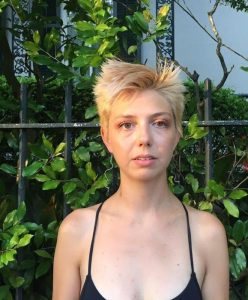
Same space
Different love
Same space
Different drugs
In space, I’m in love
Blank space
Does he love
The touch of my lips?
They all love
The curve of my hips
They all love
The bounce of my tits
They all come
In breathful bliss
I still love
The pretty dream
I still want
The real thing
I don’t buy
That you don’t love me
I don’t stop
To wait and see
I dive deep
Down a trap
Now I need
You to love me
So I know
It’s a possible task
………..
Nolan: Who are you? How would you describe yourself to someone coming across your work for the first time?
JGT: I am an artist of many disciplines with a strong intuition, a deep sea of emotions, and a distaste for the patriarchy.
Nolan: When did you first start writing poetry and what’s your goal in doing so?
JGT: I wrote as a child, but began writing poetry regularly as a teenager. I am translating the subconscious — giving my feelings and perceptions a voice. It is my favorite way to find magic within reality.
Nolan: What is your connection to New Orleans? What does it mean to you and how does living here affect your poetry?
JGT: I grew up in Tangipahoa Parish, so New Orleans served as a nearby cultural hot-spot and place of exquisite history. Aesthetically, it is a fantastic dream, and I am inspired by the artists, writers and musicians that surround me. I have now lived here many years, and this place with its blessings and curses of poverty, resilience, wealth, corruption, decadence, denial and celebration means everything to me, because it is my home.
Nolan: What unique challenges or circumstances have you faced being a woman in a field that has been historically (unjustly) dominated by men? How have you overcome these hurdles and how does this come through in your work?
JGT: I am fortunate that my first poetry teacher was Devorah Major, an amazingly talented woman poet. The inequalities of history are constant motivators to work harder. Women everywhere are learning to channel their inner truth into creative practices— instead of creating something to fit in the mold that is laid out for them.
Nolan: What are your goals with both your poetry and your life overall moving forward?
JGT: I hope to write another chapbook titled Ghost Stories in the near future. I hope that my poetry encourages honesty and empowers the meek. I hope to combine my painting, printmaking and poetry practices and to continue learning through experience and interaction.
You can buy JGT’s work here! Don’t forget to follow her latest updates here!
As stated at the beginning of this article: All of these poets have been previously featured in Big Easy Magazine’s art section! Each Wednesday we feature a local poet’s work! Be sure to check back on Wednesday’s for new and exciting work from these five, as well as other local talents!
Nolan Storey has lived in New Orleans for 10 years. He fell in love with this city as he received his bachelors in English from Loyola University New Orleans in 2012. Since then, he has gone on to publish three books, including two books of poetry. Feel free to check out some of his other articles, poetry, and short fiction pieces here.










xxxhdfire.com melissa moore riding big black cock.
Such an important piece. I especially loved Molly Kirschner’s poetry.